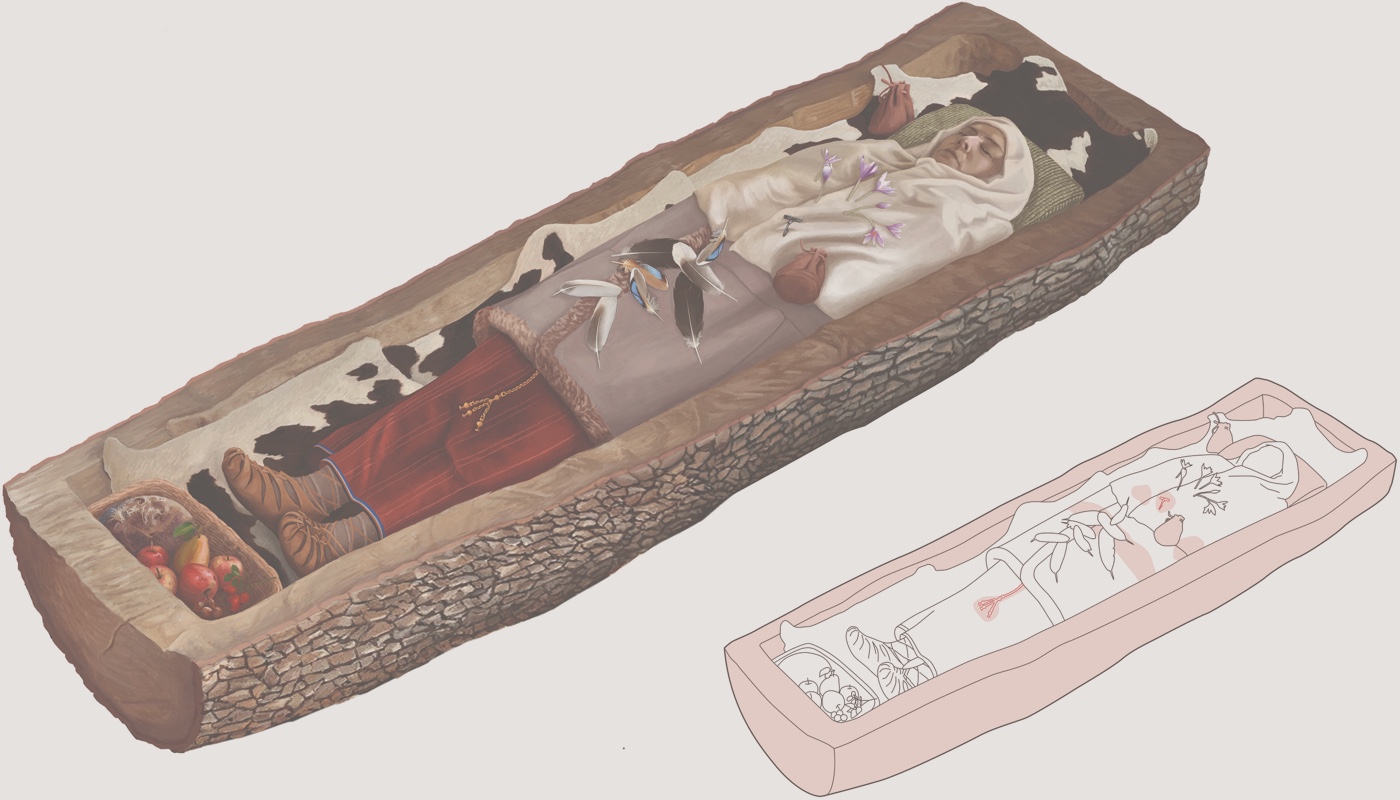Iron Age Celtic woman wearing fancy clothes buried in this 'tree coffin' in Switzerland
She was about 40 when she died and performed very little physical labor in life.
During the late Iron Age, Celts laid one of their own to rest in a tree coffin, but not before they dressed her to the nines; she wore a fine woolen dress and shawl, a sheepskin coat and a beautiful necklace strung with glass and amber beads, according to the Office for Urban Development in Zurich.
After studying the 2,200-year-old burial, archaeologists learned that the woman was about 40 years old when she died and had probably performed little physical labor during her lifetime. Moreover, an analysis of her teeth suggested this woman liked to eat starchy or sweetened foods.
Even her coffin was remarkable; the woman was buried in a hollowed-out tree trunk, which still had bark on its exterior. [In Photos: Ancient Tomb of a Celtic Prince Uncovered]
The woman's remains were originally found in March 2017, during a construction project at the Kern school complex in Aussersihl, a district in Zurich. Since then, an interdisciplinary examination by the city of Zurich's archaeology department has illustrated much about this woman's life in 200 B.C. For instance, an isotope analysis of the woman's bones showed that she was a local who grew up in Zurich, likely in Limmat Valley. (An isotope is an element with a different number of neutrons than usual.)
The archaeologists were especially intrigued by the clasp on the woman's necklace. Both ends of the necklace had a garment clip known as a brooch that allowed her to wear the string of blue and yellow glass and amber beads, they said in a statement (translated from German with Google Translate).
The woman also wore bronze bracelets and a delicate bronze belt chain with pendants hanging from it. Several iron clasps held her clothes together.
The woman's remains were found buried about 260 feet (80 meters) from the grave of a Celtic man found in 1903 when the school's gym was being built, the Office for Urban Development reported. That man had been buried with a sword, shield and lance.
Get the world’s most fascinating discoveries delivered straight to your inbox.
Because these two individuals were buried in the same decade, it's possible they knew each other, the archaeologists said.
Though people often think of the Celts as hailing from the United Kingdom, they actually lived in continental Europe, as far east as modern-day Turkey, Live Science previously reported.
- 25 Cultures That Practiced Human Sacrifice
- In Photos: Boneyard of Iron Age Warriors
- Photos: Gold, Amber and Bronze Treasures Found in Iron Age Grave
Originally published on Live Science.


Laura is the managing editor at Live Science. She also runs the archaeology section and the Life's Little Mysteries series. Her work has appeared in The New York Times, Scholastic, Popular Science and Spectrum, a site on autism research. She has won multiple awards from the Society of Professional Journalists and the Washington Newspaper Publishers Association for her reporting at a weekly newspaper near Seattle. Laura holds a bachelor's degree in English literature and psychology from Washington University in St. Louis and a master's degree in science writing from NYU.



